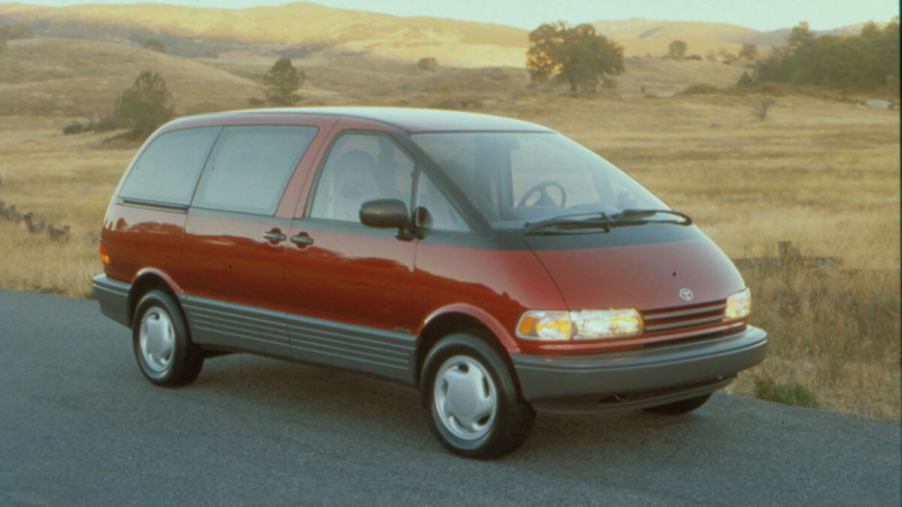
The Blessing and Curse of the Toyota Previa’s Mid-Engine Design
When it comes to cult-classic vehicles of the 1990s, it is tough to ignore the dramatic minivan designs of this era. Of course, the Chrysler Town & Country, Dodge Caravan, and Plymouth Voyager family of minivans offered a safe, functional family vehicle. However, other automotive companies had their own idea of how the ideal family minivan should be.
General Motors entered the minivan market in 1989 for the 1990 model year with the Chevrolet Lumina APV, Oldsmobile Silhouette, and Pontiac Trans Sport minivans. These vans had a radical, aerodynamic design that helped them look sportier than the competition, with a ton of outward visibility. On the heels of GM, Toyota was looking to create its own successful minivan that would also stick out amongst the competition. This minivan would be called the Previa.
The launch of the Toyota Previa
The Toyota Previa project started in 1987 as Toyota was looking to release a minivan that could compete with Chryselr’s offerings. To do so, Toyota tapped on the shoulder of its California-based design studio, Calty. This new minivan platform would be a unique, single-sliding rear door design with a unique mid-engine layout.
With this mid-engine layout, the Toyota Previa was trying to grab the attention of consumers who were on the fence about minivan ownership. If Toyota could make the minivan cool, anyone and everyone could be a target demographic, leading to a domino effect in sales. Sadly, this Toyota Previa never took off in sales in the United States. The Previa was a little too unorthodox for the average minivan buyer, and for those individuals who did not want a minivan, the Previa was a tough sell. The crux of the Previa’s failure came down to that mid-engine design.
The blessings of the Previa’s mid-engine layout
The entire project behind the Previa came down to that mid-engine design. With its mid-engine layout, the Previa theoretically offered excellent access to all essential engine parts. With the removal of the front seats, the entire engine could be accessed, making spark plug changes and other general maintenance jobs a breeze.
This mid-engine design also gave the Toyota Previa a near 50/50 weight distribution and rear-wheel drive. Yes, the Toyota Previa was a near-perfectly balanced mid-engine Toyota with rear-wheel drive and a manual transmission. Sadly, this MR2-like sports car was disguised under a round minivan body, deterring many would-be buyers.
The curse of the Previa’s mid-engine layout
According to Cars Directory, the Toyota Previa’s mid-engine design was severely limiting for future development. The Previa’s stock four-cylinder engine was underpowered compared to the Chrysler family minivan’s V6 option. However, due to space limitations in the engine bay, there wasn’t much that could be done to the Previa’s four-cylinder engine to help it compete with the larger American engines. The mid-engine platform couldn’t fit a bigger machine.
In the years following the Previa’s initial launch, the underpowered four-cylinder engine would get outfitted with a supercharger which significantly helped the power production of the Previa. This supercharged engine would even become standard equipment by the end of the Previa’s production. However, it just wasn’t enough to boost sales of the Previa enough to continue development. Although the Previa was ultimately a failure, it stands as a symbol of a time when Toyota tried new strategies to get a foothold in the U.S. market. If you want to get behind the wheel of a quirky minivan with sports car-like drivability, look no further than an old Previa!




